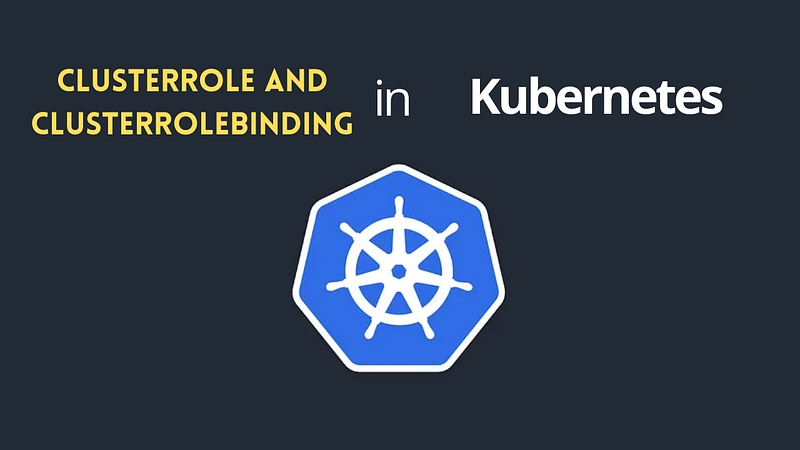Understanding Kubernetes: Part 28 ClusterRole and ClusterRoleBinding

📢 If you’ve been following our Kubernetes series 2025, welcome back! For new readers, check out Part 27: Role and RoleBinding
What is a ClusterRole?
A ClusterRole is similar to a Role but applies permissions cluster-wide instead of being restricted to a specific namespace.
What is a ClusterRoleBinding?
A ClusterRoleBinding associates a ClusterRole with a user, group, or service account, granting them the specified permissions at the cluster level.
Use Cases
ClusterRole and ClusterRoleBinding are useful in various scenarios:
1. Granting Read-Only Access to All Namespaces
Providing read-only permissions to developers for all cluster resources.
2. Managing Cluster-Wide Resources
Controlling access to cluster-wide resources like nodes, persistent volumes, and namespaces.
3. Granting Admin Access Across Namespaces
Assigning administrative privileges to users who need to manage resources across multiple namespaces.
ClusterRole Syntax
A ClusterRole is created using the following YAML configuration:
apiVersion: rbac.authorization.k8s.io/v1
kind: ClusterRole
metadata:
name: cluster-admin-role
rules:
- apiGroups: [""]
resources: ["pods", "services", "nodes"]
verbs: ["get", "list", "watch"]This ClusterRole allows listing and reading Pods, Services, and Nodes across the cluster.
ClusterRoleBinding Syntax
A ClusterRoleBinding links a ClusterRole to a user, group, or service account.
apiVersion: rbac.authorization.k8s.io/v1
kind: ClusterRoleBinding
metadata:
name: cluster-admin-binding
subjects:
- kind: User
name: john-doe
apiGroup: rbac.authorization.k8s.io
roleRef:
kind: ClusterRole
name: cluster-admin-role
apiGroup: rbac.authorization.k8s.ioThis binding grants the user john-doe the permissions defined in cluster-admin-role across the cluster.
Removing ClusterRole and ClusterRoleBinding
To delete a ClusterRole:
kubectl delete clusterrole cluster-admin-roleTo delete a ClusterRoleBinding:
kubectl delete clusterrolebinding cluster-admin-bindingConclusion
ClusterRole and ClusterRoleBinding are essential for managing cluster-wide access in Kubernetes. They provide fine-grained permissions across all namespaces, ensuring secure access control and resource management.
In My Previous Role
As a Senior DevOps Engineer, I utilized Kubernetes ClusterRoles and ClusterRoleBindings for efficient access management:
Read-Only Access: Assigned ClusterRoles for developers to inspect cluster-wide resources without modification rights.
Cluster-Wide Management: Used ClusterRoles for managing node-level permissions and security configurations.
Admin Access Control: Configured ClusterRoleBindings to enforce least privilege access while ensuring smooth operations.
🚀 Ready to Master Kubernetes?
Take your Kubernetes journey to the next level with the Master Kubernetes: Zero to Hero course! 🌟 Whether you’re a beginner or aiming to sharpen your skills, this hands-on course covers:
✅ Kubernetes Basics — Grasp essential concepts like nodes, pods, and services. ✅ Advanced Scaling — Learn HPA, VPA, and resource optimization. ✅ Monitoring Tools — Master Prometheus, Grafana, and AlertManager. ✅ Real-World Scenarios — Build production-ready Kubernetes setups.
🔥 Flash Sale: Buy Kubernetes Course, Get Terraform FREE! Limited Time Offer!
🔥 Start Learning Now: [Join the Master Kubernetes Course + FREE Access to Terraform Course](https://cloudops0.gumroad.com/l/k8s)
Don’t miss your chance to become a Kubernetes expert! 💻✨
🚀 Stay ahead in DevOps and SRE! 🔔 Subscribe now and never miss a beat on Kubernetes and more. 🌟
🚀 Master Terraform: Infrastructure as Code
🔥 Start Learning Now: Join the Master Terraform Course
Last updated